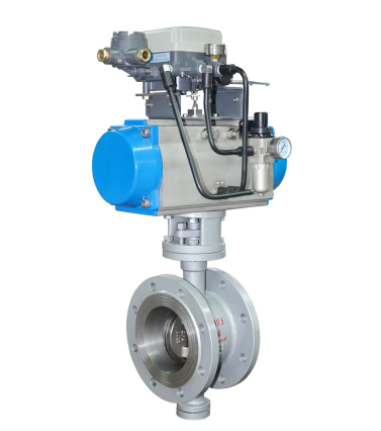Aug. 12, 2024
A butterfly valve is one of the most commonly used valves in industrial production pipeline systems, and the components mainly consist of the valve body, valve seat, valve stem, butterfly plate, and transmission device. There are many types of butterfly valves, and the classification methods are also various. According to the connection method, there can be a butt butterfly valve, flange butterfly valve, and welded butterfly valve. According to the driving form, it can be divided into manual butterfly valve, turbo butterfly valve, pneumatic butterfly valve, electric butterfly valve, and so on. There are many similar classifications, so we will not describe them here. Although there are different classification methods, the working principle of butterfly valves is similar.

The design of the butterfly plate is streamlined, which minimizes fluid resistance and improves the efficiency of the valve, saving energy and efficiency.
The body of the butterfly valve is strong enough to have a strong resistance to vibration.
The stem adopts a through-stem structure, which is safer to use. When the butterfly valve opens and closes, the stem only rotates and does not lift, so that the packing at the stem is not easy to be destroyed and the sealing is guaranteed. In addition, in order to avoid accidental breakage at the connection of stem and butterfly plate and the danger of stem collapsing out, the stem is purposely fixed with the butterfly plate taper pin, and the design of anti-flush-out is made at the outstretched end of the stem.
There are various connection methods, such as flange connection, clamping connection, welding, etc. To meet the different working conditions of different users.
Various driving methods can be equipped with a handle, turbine drive, electric, pneumatic, hydraulic, and other different actuators, users can choose according to the requirements of the working conditions.
1. The butterfly valve is convenient and quick to open
The handle can be rotated 90° to completely close or open the valve. Large butterfly valves are usually equipped with a so-called gearbox, in which the handwheel is connected to the valve stem through a gear. This simplifies the operation of the valve, but at the expense of speed.
2. The manufacturing cost of butterfly valves is relatively low
Due to its design structure, the butterfly valve requires less material. The most economical is the butt-clamp type installed between two pipe flanges. Another type, the lug-to-clamp type, is secured between two pipe flanges by bolts that connect the two flanges and pass-through holes in the valve housing. In addition, the common butterfly valve material is usually cheaper.
3. Butterfly valves require less space
This is due to its compact design, which requires much less space compared to other valves.
4. Butterfly valves are usually associated with reduced maintenance.
The reliability and less maintenance of butterfly valves make them popular. The low level of wear makes the valve last longer. This reduces direct operating costs and reduces the time required for valve maintenance.
Butterfly valves are opened and closed by operating the actuator to rotate the stem, which in turn rotates the butterfly plate. In the cylindrical channel of the butterfly valve body, the disc-shaped butterfly plate is connected to the valve stem, and the rotation of the valve stem drives the rotation of the butterfly plate to do flow control. The rotation angle is between 0° and 90°. When the rotation of the butterfly plate reaches 90°, the butterfly valve is in the fully open position in the pipeline. At this time, only the thickness of the butterfly plate is the only resistance to the fluid passing through, and the flow resistance is very small. At the same time, when the butterfly plate rotates between 0° and 90°, it can be used to regulate the flow of the medium.
Butterfly valves can be used in a wide range of applications. They perform well in water and slurry applications. The following are some typical applications for butterfly valves.
ㆍCooling water, air, gas, fire protection, etc.
ㆍSlurries and similar services
ㆍDust extraction
ㆍHigh pressure and high-temperature water and steam services
ㆍCompressed air or gas applications
We are a butterfly valve supplier, please feel free to contact us if you need them.
Headquarter Add.: SUPCON Park, No.309 Liuhe Road, Binjiang District, Hangzhou, 310053, China.
Tel.: +86 571 8111 9774
Fax: +86 571 8111 9737
E-mail: [email protected]
